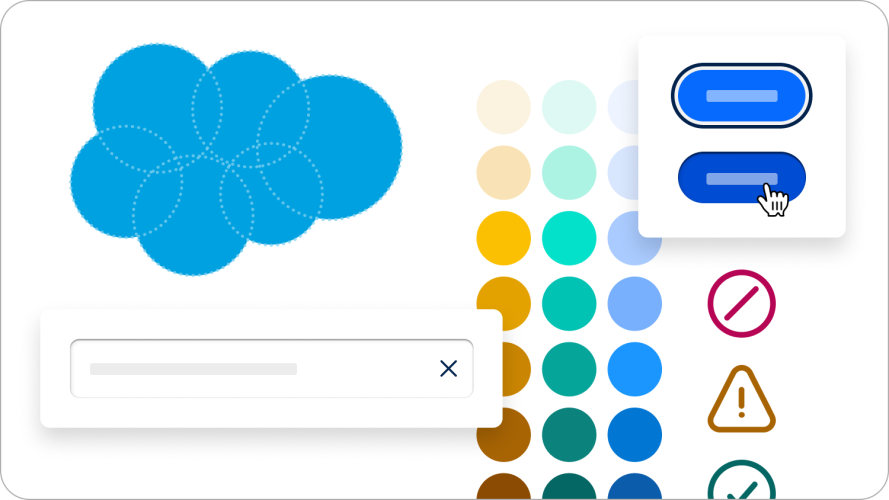4 Customer Service Metrics You Should Measure



Guide your service teams, update leadership, and review your current customer service strategy using these go-to metrics.

Nausheen Najib
Behind every customer experience is a set of fine-tuned metrics. Customer service metrics are the performance indicators you use to measure everything from agent efficiency to customer satisfaction.
It’s what every successful company tracks and monitors to improve service quality – and quality is imperative. According to our research, 80% of customers say the experience a company provides is just as important as the products and services it sells.
But with so many different kinds of metrics out there, how can you narrow down the list? Where can you get started? Here, we break down customer service metrics, show how technology and AI can enhance tracking, and describe a few you can start implementing in your strategy now to stay competitive.
What you’ll learn:
- What are customer service metrics?
- Why are customer service metrics important?
- Top 4 customer service metrics to track
- How to use technology to track customer service metrics
- How AI can enhance customer service performance
- How to implement customer service metrics strategies
Join the Serviceblazer community
We’d love for you to join our amazing community of Serviceblazers. Connect with fellow service pros, tap into industry trends, and grow your career.



What are customer service metrics?
Customer service metrics are the tools that give you a pulse on the performance of your service organization.
These metrics can give you insight into your existing processes, how your agents are performing, and the quality of your customer interactions. To put it simply, it’s the set of KPIs your organization signs up for to provide great customer service.
Customer service metrics can be either quantitative or qualitative. Quantitative metrics unearth information related to operations (aka operational data), such as how long it takes for an agent to solve a customer’s issue. Qualitative metrics focus more on experience data, like customer satisfaction. (Back to top)
Why are customer service metrics important?
Customer service metrics are important because they allow service leaders to get answers to some of their most critical questions, like:
- How is my service team performing?
- How are internal assets, like knowledge articles, performing?
- How am I optimizing my service channels?
- How are our customers feeling about our level of service?
With both qualitative and quantitative metrics, your business can see what’s working and what needs improvement to satisfy customers. Today’s customers expect speedy, personalized service, and metrics can help you see if you’re providing that high level of service.
If you don’t have a metric, you don’t know what to improve. If you don’t improve, you lose customers – and with them, your business. (Back to top)
Top 4 customer service metrics to track
There are tons of customer service metrics to sift through and choose, depending on your strategy – but it’s best to start off with a small mix of both qualitative and quantitative metrics. This way, you can collect both hard data and the less tangible parts of your customer experience.
- Average Handle Time/Average Speed to Answer: Average Handle Time quantifies the average duration required to handle customer inquiries, while Average Speed to Answer measures the time taken to respond to customer contacts. These metrics provide valuable insights into the responsiveness and efficiency of customer service operations, ensuring timely resolution of customer issues and enhancing overall satisfaction.
- First Contact Resolution: How many of your customers are able to resolve their issues the first time they contact your business? First Contact Resolution (FCR) measures the percentage of customer inquiries resolved on the first interaction. This metric directly reflects the efficiency and effectiveness of customer service agents in addressing customer needs promptly – and comprehensively.
- Customer Satisfaction: A customer satisfaction score (CSAT) is how your customers rate your business, making it a key measurement of customer loyalty. The scores are typically collected through customer satisfaction surveys that ask your customers to rate products or services on a numeric scale.
- Customer Effort Score: How easy is it for customers to use your company’s services or products? Customer effort score (CES) measures this so you can find where customers are experiencing the most effort and make changes. Customers are more loyal to a product or service that’s easier to use. (Back to top)
How to use technology to track customer service metrics
In today’s digital world, it only makes sense to integrate customer service metrics with your existing CRM software.
For one, if your agents are working in your CRM already, you don’t want them to deal with the hassle of switching between screens and software to check out the latest metrics. By having all of your information in one place, you get a holistic view of your customers, agent performance, and more. Think of your CRM software as a medical record: a doctor should be able to look at it and see all of the medications a patient is taking and how many visits they’ve had, all to get a comprehensive view of their health.
And with a solution like Salesforce Service Cloud, the benefits of integrating customer service metrics with CRM systems extend beyond operational efficiency – it sets in motion a continuous cycle of improvement. Customer service metrics serve as the barometer of CRM system effectiveness, letting organizations gauge performance, identify areas for optimization, and then implement changes. This iterative process helps teams to refine CRM strategies, which is how your metrics will get better and better over time. (Back to top)
How AI can enhance customer service performance
As customer expectations continue to evolve, so do the challenges faced by service teams in meeting them. Fortunately, artificial intelligence (AI) technologies offer a promising solution to enhance customer service performance in unprecedented ways.
AI presents a multifaceted approach to improving agent productivity. With solutions like Service Intelligence, for example, organizations can use predictive analytics to give agents valuable insights, enhancing their efficiency in addressing customer queries. This can directly contribute to customer service metrics like First Contact Resolution, or Customer Satisfaction.
Let’s use another Salesforce example: Einstein Conversation Mining. By automating the laborious task of analyzing customer interactions, AI helps organizations to glean insights from vast troves of conversational data. This not only makes it easier to identify key trends and topics, but also empowers teams to address areas for improvement. All of it enhances the overall health of the service ecosystem. (Back to top)
How to implement customer service metrics strategies
So how can you start using metrics in your customer service strategy?
First and foremost, it’s crucial to identify your organization’s specific customer service goals. Are you aiming to reduce case handle time, improve first contact resolution rates, or enhance customer satisfaction scores? Understanding your objectives is key to selecting the most relevant metrics.
From there, keep the following guidelines in mind:
- Make your metrics simple: While it may be tempting to track a multitude of metrics, focusing on a select few that directly align with your goals yields better results. By prioritizing one to three key metrics at first, organizations can avoid the pitfalls of distraction and ensure a clear focus on measuring success.
- Make your metrics accessible: Whether it’s frontline agents or service leaders, ensuring that relevant metrics are readily available empowers teams to take action and drive improvements in efficiency.
- Make your metrics central: Integrating metrics tracking within your CRM system provides a centralized repository of customer service data, allowing teams to derive insights seamlessly.
Implementing effective customer service metrics requires a strategic approach that aligns with organizational goals, prioritizes simplicity, and uses integrated software solutions – preferably with AI capabilities. By following these guidelines, you can harness the power of metrics to drive continuous improvement and deliver exceptional customer experiences. (Back to top)
Vincent Pham contributed to this blog post.
Looking for efficiency? Start here
See how you can help your agents become more efficient — and your customers happier. When you have an easy-to-use platform for your data, agents have all the information they need to provide the care customers expect.


























